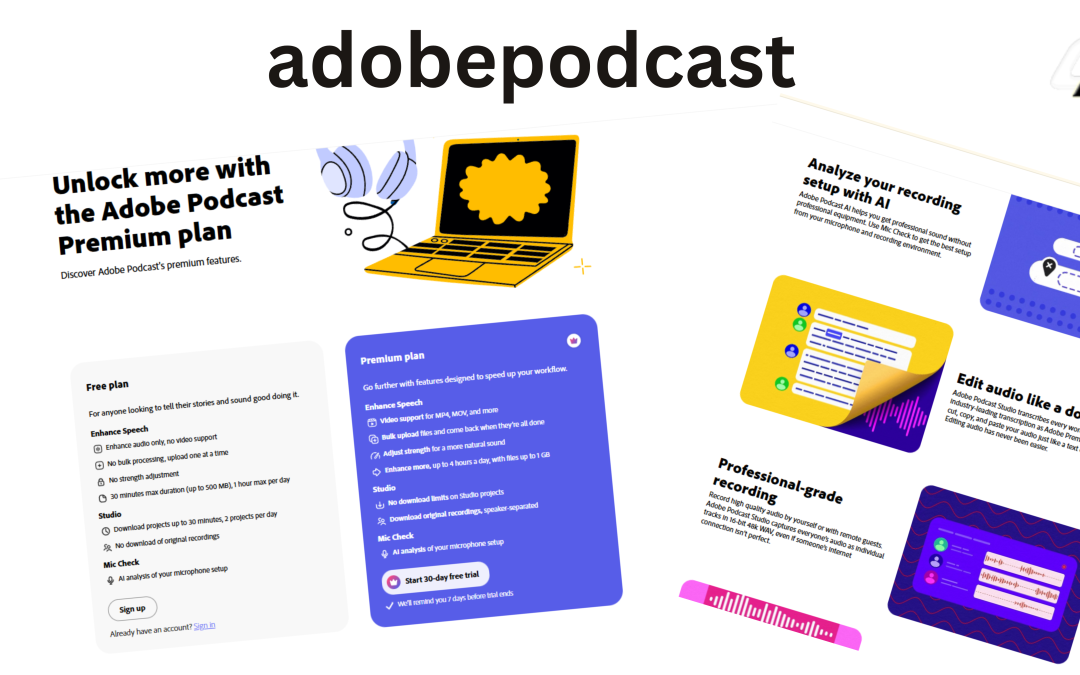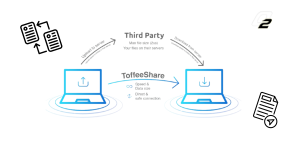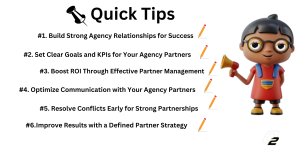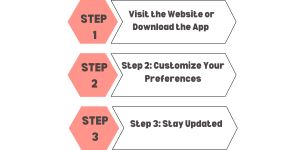
by Shashikanth Heerekar | Nov 13, 2024 | Uncategorized
Discover how Adobe Podcast can revolutionize your podcasting workflow. Learn about its powerful features, from AI-powered audio enhancement to remote recording and transcription.
Introduction
In the rapidly growing world of podcasts, high-quality audio and efficient editing are essential to keep audiences engaged. Adobe Podcast, Adobe’s dedicated podcast editing software, revolutionizes the podcasting experience with AI-powered tools catering to beginners and professionals. This article will explore how Adobe Podcast simplifies audio production, making it accessible for creators at all levels.
Key Features of Adobe Podcast
AI-Powered Audio Enhancement
One of the standout features of Adobe Podcast is its AI-powered audio enhancement. This tool automatically cleans up audio by reducing background noise, eliminating echo, and enhancing voice clarity, making it easier to remove background distractions.. AI algorithms identify and remove imperfections, producing a smooth, studio-quality sound that resonates with listeners. With Adobe’s advanced audio editing software, even recordings made in imperfect conditions can sound polished and professional.
Transcription and Editing
Adobe Podcast simplifies editing with automatic transcription, converting spoken audio into text for easy editing and organization. This feature lets podcasters quickly locate, edit, and rearrange specific segments of their recordings without scrubbing through audio files manually. Transcription also helps streamline the podcasting workflow by allowing editors to make textual changes that reflect directly in the audio, making Adobe Podcast one of the best podcast transcription tools available.
Remote Recording
With Adobe Podcast’s remote recording capabilities, in-person recording has become less essential. Podcasters can now record high-quality audio with multiple guests from any location. This feature captures each participant’s audio separately, ensuring clarity and minimizing background noise. Adobe’s remote podcast recording solution is perfect for creators who want to host guests from anywhere in the world without compromising audio quality.
Royalty-Free Music
Music is often a crucial element in creating an immersive podcast experience. Adobe Podcast offers access to a library of royalty-free music specifically curated for podcasts, adding a professional touch to intros, transitions, and outros. With various tracks at their fingertips, podcasters can enhance their shows with music that suits their content’s tone without worrying about copyright issues.

How to Use Adobe Podcast
Step-by-Step Guide
- Recording: Open Adobe Podcast and start a new project. Select either in-person or remote recording options, depending on your setup. If using remote recording, invite your guests to join the session.
- Editing: Once recorded, access the transcription feature to make edits by highlighting text or rearranging sections in the transcript. Adobe’s intuitive interface makes editing a breeze for novice and experienced editors.
- Enhancing Audio: Use AI-powered enhancement tools to remove noise and improve clarity. Any more audio parameters can be changed as needed.
- Adding Music: Browse the royalty-free music library to select tracks that complement your content. Add music to your timeline and adjust volumes to blend smoothly with your voiceover.
- Publishing: Export the final product in your preferred format. Adobe Podcast also allows direct publishing to various podcast platforms.
Tips and Tricks
Use Headphones: To avoid feedback during remote recording sessions.
Organize with Labels: Label key moments during transcription to quickly locate important segments.
Experiment with Music: Try different royalty-free tracks until you find the perfect fit to elevate your podcast’s atmosphere.
Save Regularly: Save your work to prevent data loss and ensure all edits are captured.
Benefits of Using Adobe Podcast
Time-Saving
Adobe Podcast’s tools are designed to streamline the entire podcasting workflow. Adobe’s software reduces manual work from transcription to audio enhancement, allowing creators to focus on content rather than technical details. The time saved can be redirected to refining content, marketing, and engaging with listeners.
Improved Audio Quality
With AI-powered podcasting technology, Adobe Podcast significantly enhances audio quality, even if recorded in less-than-ideal environments. The noise reduction and echo elimination features ensure a professional sound without requiring extensive audio engineering knowledge.
Professional-Grade Results
For creators who want polished results but need more technical skills, Adobe Podcast’s user-friendly interface and AI-driven tools make it easy to produce professional-grade podcasts. This podcast production tool is ideal for users who need reliable audio quality without investing in complex setups or advanced audio editing software.
Adobe Podcast vs. AudioEnhancer.ai: Which Should You Use?
While Adobe Podcast offers an all-in-one solution for recording, editing, and publishing podcasts, some creators may prefer using standalone tools for specific tasks like audio enhancement.
| Feature |
Adobe Podcast |
AudioEnhancer.ai |
| AI Audio Enhancement |
✅ Built-in |
✅ Standalone Tool |
| Audio Editing |
✅ Text-based & timeline |
❌ Not available |
| Remote Recording |
✅ Yes |
❌ No |
| Ease of Use |
⭐⭐⭐⭐ |
⭐⭐⭐⭐⭐ |
| Best For |
All-in-one podcast production |
Quick enhancement of any audio file |
Use Adobe Podcast if you’re managing an entire podcast production from start to finish.
Use AudioEnhancer.ai if you already have recordings and want to enhance them instantly without complex software.
Many creators use both: enhance their audio with Audioenhancer.ai first, then edit and publish using Adobe Podcast.
Additional Elements of abode-podcast
User Interface and Accessibility:
Describe Adobe Podcast’s user-friendly design. Mention any customization options, such as editing layouts or shortcuts, that make navigating and managing projects easier for creators at all levels.
Export and Distribution Options:
Provide details on Adobe Podcast’s export options, such as audio formats and compatibility with major podcast hosting platforms. Discuss whether Adobe offers direct publishing to platforms like Spotify, Apple Podcasts, etc.
Community and Support Resources:
Highlight Adobe’s support resources, such as tutorials, forums, and customer support channels. This will appeal to new users who may need extra guidance.
Comparative Analysis with Other Software:
Comparing Adobe Podcast with other popular podcast editing software can illustrate its unique features, helping readers understand its competitive edge.
User Testimonials or Case Studies:
Adding real-life user examples or testimonials can make the benefits more relatable and demonstrate Adobe Podcast’s impact in real-world settings.
Pricing Information:
If Adobe Podcast is subscription-based, offer a quick pricing or trial options overview. This helps readers make informed decisions about adopting the software.
Adding these elements would give readers a thorough understanding of Adobe Podcast’s features and benefits, making the article more valuable and actionable. Let me know if you’d like more suggestions on these points!
Conclusion
Adobe Podcast combines advanced features like AI-powered audio enhancement, transcription, and remote recording to provide an all-in-one solution for podcast production. With its intuitive interface and royalty-free music library, Adobe Podcast allows users to produce high-quality audio with minimal effort, making it an essential tool for podcasters of all levels.
Try Adobe Podcast today to experience how it can transform your podcasting journey with seamless recording, editing, and publishing features. Whether you’re a seasoned creator or a newcomer to podcasting, Adobe Podcast offers tools to help you create content that truly resonates.

by Shashikanth Heerekar | Nov 13, 2024 | Technology
Discover how ToffeeShare enables safe, peer-to-peer file sharing without saving files on servers. Learn why ToffeeShare’s encrypted, private transfers are ideal for one-time file exchanges.
Introduction
Privacy and data security are paramount when sharing files online in today’s digital world. Traditional cloud-based file-sharing services, while convenient, often involve saving files on servers that may be vulnerable to unauthorized access. ToffeeShare offers a secure, peer-to-peer file-sharing solution, allowing users to transfer files without intermediary storage. Using advanced encryption and direct connectivity, ToffeeShare meets the needs of users seeking privacy-focused file sharing that doesn’t compromise speed or reliability.
Protecting User Privacy and Data Security
ToffeeShare’s peer-to-peer model prevents files from ever being stored on external servers, so the file remains entirely on the sender’s device until it reaches the recipient. This approach minimizes data exposure, significantly enhances data security, and ensures that sensitive files stay private. ToffeeShare lowers the possibility of unwanted access by limiting the file link’s validity to the duration of the ongoing transfer session.
Quick Guide: Using ToffeeShare for File Transfers
Here’s a simple process to send and receive files securely with ToffeeShare:
- Upload Your File: Drag your file into ToffeeShare’s upload area on their website.
- Share the Unique Link: ToffeeShare creates a link for the recipient, who can access the file by clicking the link.
- Download: The recipient can start the download immediately, making it a fast and convenient way to share files without server delays.
How ToffeeShare Protects User Privacy and Data Security
ToffeeShare was built with user privacy in mind, adopting a peer-to-peer (P2P) model that prevents files from being stored on third-party servers. In P2P file-sharing systems, data is transmitted directly from the sender’s device to the recipient’s, ensuring that the file does not linger in cloud storage, which often comes with privacy risks. This secure file transfer method enhances data privacy by giving users more control over their data.

Encryption Methods Used to Secure File Transfers
Security is a top priority for ToffeeShare, which employs end-to-end encryption to protect files during transmission. Using AES-256 encryption—an industry-standard method known for its robust security—ToffeeShare encrypts files at the sender’s side and decrypts them only on the receiver’s side. This ensures that no intermediaries can access the files. Additionally, WebRTC (Web Real-Time Communication) technology facilitates these secure P2P transfers by directly allowing encrypted, real-time data exchange between devices.
How to Use ToffeeShare for File Transfers
Using ToffeeShare is straightforward:
- Upload the document: Go to the ToffeeShare website, then drag and drop your file into the appropriate location.
- Share the Link: ToffeeShare generates a unique link for the file, which you can share with the recipient.
- Download the File: The recipient accesses the link, and the transfer begins immediately.
Since the file remains on the sender’s device until transferred, this one-time, link-based system ensures privacy without storing files on any server.
Speed and Reliability of File Transfers
ToffeeShare’s reliance on P2P technology means that the internet connection quality of both the driver and receiver dice the speed of file transfers. This direct transfer, free from bottlenecks often experienced on server-based systems, makes ToffeeShare a reliable option for those needing fast file sharing without size limitations. As a result, ToffeeShare has gained a positive reputation on ToffeeShare Reddit forums and among tech enthusiasts looking for cloud storage alternatives.
Device and Operating System Compatibility
ToffeeShare is compatible with most devices and operating systems, including PCs, Macs, Android, and iOS. As a browser-based service, it works seamlessly on modern browsers such as Chrome, Firefox, and Safari, ensuring users on different platforms can connect effortlessly.
Similar Peer-to-Peer File Sharing Services
While ToffeeShare is unique in its privacy-focused file-sharing approach, other P2P file-sharing tools include Snapdrop, Send Anywhere, and FilePizza. These alternatives also enable direct file transfers, though they may vary regarding security features, speed, and file size limits.

Technical Aspects of ToffeeShare: WebRTC and Encryption
ToffeeShare uses WebRTC technology to facilitate real-time browser-to-browser communication. WebRTC’s efficiency is enhanced through Transport Layer Security (TLS) protocols, securing file exchanges across public networks. ToffeeShare’s end-to-end encryption (via AES-256) ensures that files remain unreadable to any third party, making it a dependable choice for users concerned with data security and secure file transfer.
Potential Future Developments for ToffeeShare
ToffeeShare may introduce new features to improve usability and performance, such as optimizing connection speed for mobile devices, refining encryption protocols, or adding multi-file transfer options. ToffeeShare’s commitment to remaining safe for secure file transfers makes it a promising choice in the P2P file-sharing space as privacy concerns grow.
Security Best Practices for Using ToffeeShare and Other File-Sharing Services
To maximize security while using ToffeeShare or similar file-sharing software, consider these best practices:
- Verify Links: Only share the link with trusted contacts to avoid unauthorized access.
- Use Strong Passwords: Add a password to your file link for an extra security layer.
- Update Browsers Regularly: Ensure your browser is up-to-date to avoid vulnerabilities.
- Use a VPN: A VPN can help secure your connection, particularly on public Wi-Fi.
Common Issues and Solutions
The following are some typical problems that users may run into:
- Slow Transfer Speeds: To improve speed, check your network connection, as both devices’ internet speeds influence transfer rates.
- Compatibility Issues: Use a supported browser or check for software updates if ToffeeShare does not function as expected.
- Link Expiration: Since ToffeeShare transfers are live, ensure both parties are online to complete the transfer or consider scheduling a convenient time.
Conclusion
ToffeeShare offers a secure, user-friendly, and privacy-focused file-sharing solution for those needing one-time, encrypted file transfers and with its peer-to-peer model and reliance on WebRTC technology, ToffeeShare bypasses central storage, keeping files safe and accessible only by the intended recipient. ToffeeShare is a strong alternative to traditional online file-sharing services for users who prioritize data security and efficiency, setting a high bar for future file-sharing solutions.

by Shashikanth Heerekar | Nov 12, 2024 | All Things about Marketing, Uncategorized
Explore Global Trade Review (GTR) to stay updated on the latest news, insights, and trends in trade finance. Learn about market dynamics, regulatory changes, and expert analysis to help navigate global trade successfully.
Introduction
Global Trade Review (GTR) has become a cornerstone resource for professionals in the trade finance industry. With the ever-evolving dynamics of global trade, GTR plays a crucial role in delivering timely insights, analysis, and resources on international trade, trade finance, and related topics. From covering the latest updates in global trade to hosting industry-leading events, GTR supports companies and stakeholders in navigating the complexities of the trade world. This article delves into GTR’s role, recent updates, awards, and other contributions to the trade finance industry.
The Role of Global Trade Review (GTR) in Trade Finance
GTR provides an indispensable platform for sharing knowledge, analysis, and news across various trade finance topics, including global trade, international trade, export and import finance, supply chain finance, and trade credit insurance. By gathering insights from industry experts and thought leaders, GTR helps businesses make informed decisions in a landscape impacted by geopolitical risks, economic sanctions, and advances in digital trade.
Key Areas Covered by GTR:
- Trade Finance News and Trends – Cover market trends, regulatory updates, and industry innovations.
- Supply Chain Finance – Insights on securing supply chain financing and addressing liquidity challenges.
- Geopolitical and Economic Analysis – Updates on global economic policies, sanctions, and trade barriers.
- Sustainable Trade – Analysis of ESG (environmental, social, and governance) principles shaping sustainable trade practices.
- Digitalization in Trade – Exploring blockchain, digital documents, and technology solutions for a modern trade finance infrastructure.
GTR delivers content that supports businesses in meeting challenges and strengthens the trade finance community by fostering dialogue and collaboration among its members.
Latest Topics and Updates on GTR
1. Digital Trade Transformation
GTR has prominently focused on the digitalization of trade in recent years. Advancements in blockchain and digital documentation are shaping the future of digital trade by enhancing efficiency and reducing fraud. GTR has reported extensively on digital trade initiatives, covering technologies that enable real-time tracking, secure payments, and faster transaction processing.
2. Sustainable and Responsible Trade
The demand for sustainable trade has gained momentum, and GTR plays a critical role in promoting these conversations. With ESG becoming a priority for businesses globally, GTR shares insights on sustainable trade practices, such as green financing and environmentally friendly logistics, that contribute to a positive global impact. Emerging regulations like the EUDR are also shaping sustainable trade by requiring greater transparency and due diligence in sourcing practices, particularly in sectors linked to agriculture and forestry.
3. Addressing Geopolitical and Economic Risks
GTR provides an in-depth analysis of geopolitical risks and economic sanctions that impact global trade. For example, the publication closely follows economic sanctions affecting trade with Russia, China, and other nations. These insights help companies develop strategies for mitigating risks associated with international transactions and trade agreements.
4. Trade Finance in a Post-Pandemic Economy
The COVID-19 pandemic reshaped global trade, creating supply chain disruptions and accelerating the need for digital transformation. GTR has explored how companies are recovering from these impacts and adapting their trade finance practices to a post-pandemic world, highlighting trends in remote working, online payment systems, and risk management strategies.
Global Trade Review Awards and Recognition
The Global Trade Review Awards celebrate excellence and innovation in the trade finance industry. They are among the most respected recognitions, honouring companies, banks, and individuals who have demonstrated outstanding achievements in trade finance.
Highlights of GTR Awards:
- Categories: Awards cover various categories, including trade finance, export finance, supply chain finance, and sustainable trade.
- Eligibility: Companies and individuals are nominated based on their innovative solutions, global trade impact, and industry advancement contributions.
- Recent Award Winners (2023): Winners of the GTR Awards for 2023 include banks and financial institutions that have introduced novel trade finance solutions, supported sustainable trade, and demonstrated leadership in challenging market environments.
Global Trade Review Events and Conferences
GTR is known for hosting high-profile events and conferences worldwide, attracting industry professionals, policymakers, and corporate leaders to discuss the future of trade finance. 
Notable GTR Events:
- GTR Asia, GTR Europe, GTR Africa, and GTR MENA are regional events that allow professionals to network, discuss local trade finance challenges, and share global solutions.
- GTR Conference Highlights: These conferences address regulatory updates, economic sanctions, sustainable trade finance, and digital transformation.
- Networking and Learning Opportunities: Attendees benefit from engaging panels, expert talks, and networking sessions that foster collaboration across the trade finance community.
Global Trade Review (GTR) Milestones and Historical Impact
Since its establishment, GTR has achieved several milestones, contributing to the evolution of trade finance through its publications and events. A look at GTR’s key achievements highlights its role in shaping the industry:
- Global Trade Review 2019-2022: GTR’s publications from 2019 to 2022 documented critical changes in trade finance, particularly the shift toward digital transformation and the impacts of global economic policies on trade.
- Global Trade Review 2023: This year’s reviews have focused on the ongoing digital revolution, the importance of sustainable finance, and navigating new geopolitical landscapes.
- Elite Global Trade Review and Global Trade Options Review: Through its “elite” content and special reports, GTR provides in-depth analyses of significant market shifts, offering tailored advice and expertise to decision-makers in trade finance.
AI’s Impact on Global Trade Review (GTR)
GTR has integrated AI-driven analytics and insights into its platform to provide more actionable content for trade finance professionals. By leveraging AI, GTR can offer:
- Real-Time News and Insights: AI can help GTR analyze large data sets to deliver news on economic sanctions, trade policies, and market trends faster than ever, making content more relevant and timely.
- Customized Content Recommendations: AI-powered recommendation engines suggest articles and insights based on users’ preferences, improving user engagement and ensuring readers find the most relevant information.
- Market and Risk Analysis Tools: GTR’s use of AI has enabled it to create tools that help users assess global trade risks, aiding businesses in making data-driven decisions when entering new markets or managing geopolitical risks.
- Enhanced Networking at Events: AI-driven networking tools at GTR conferences allow attendees to connect with relevant industry peers based on shared interests, resulting in more effective partnerships.
Statistics on AI in Trade Finance
- Automation Efficiency: AI can reduce trade finance document processing time by up to 90%, significantly lowering costs and reducing manual workloads.
- Fraud Detection: AI has helped reduce fraud-related losses by 40% for trade finance firms, safeguarding transactions and improving security.
- Increased Approval Rates: AI in decision-making has increased trade finance application approval rates by 25%, enhancing loan issuance efficiency.
- Improved ESG Compliance: AI-based ESG tools improve reporting accuracy by 40%, helping companies comply with sustainability regulations and attract investment.
How GTR Supports the Trade Finance Industry
1. Providing Expertise and Guidance
GTR’s platform brings together industry experts who contribute their knowledge on topics ranging from trade credit insurance to import and export finance. GTR enables businesses to anticipate market changes and leverage trade finance strategies effectively by featuring thought leadership articles.
2. Shaping Policy through Advocacy
Through its events and publications, GTR also serves as a voice for the trade finance industry, advocating for policies that promote fair and accessible trade. The publication has been instrumental in shedding light on issues that affect the industry, such as economic sanctions and supply chain financing.
3. Offering Education and Training
GTR’s educational content, case studies, and event workshops allow professionals to stay updated on industry best practices, helping them achieve certifications and improve their expertise in partner management strategy and agency partner onboarding.
Impact of Economic and Geopolitical Risks on Global Trade
Geopolitical factors heavily influence global trade, and GTR covers the effects of economic sanctions, trade wars, and regional instabilities on international trade. This information is crucial for businesses seeking to understand the risks of expanding their operations globally and to adapt their trade finance strategies accordingly.
Examples of Key Issues Covered:
- Sanctions and Trade Restrictions – Analyzing the impact of sanctions on trade with countries like Russia and China.
- Supply Chain Vulnerabilities – Reporting on the supply chain disruptions due to geopolitical tensions and economic uncertainties.
Digital Trade Transformation and the Future of Trade Finance
Digitalization has revolutionized the trade finance industry, with GTR at the forefront of reporting on these advancements. Key digital trends include blockchain, e-invoicing, and AI-based credit risk assessment, which streamline processes and increase transparency.
Digital Trade Topics Covered by GTR:
- Blockchain Applications in Trade – How blockchain secures transactions and reduces fraud.
- AI and Predictive Analytics – How AI is used for predictive risk management in trade finance.
- E-Documentation and Paperless Trade – The shift toward paperless trade through digital documents and e-signatures.
Conclusion
Global Trade Review (GTR) is a trusted source for trade finance professionals. It provides invaluable insights into global trade dynamics, digital transformation, and sustainable finance practices. GTR has become a vital resource for navigating the complex world of trade finance by connecting trade finance experts and fostering dialogue on economic challenges and innovations. Through its comprehensive news coverage, industry events, and prestigious GTR Awards, GTR continues to set the standard for excellence in global trade finance, enabling professionals to make informed decisions in an ever-evolving market.

by Shashikanth Heerekar | Nov 12, 2024 | All Things about Marketing
Discover effective strategies for managing agency partners to drive successful collaboration. Learn best practices for setting expectations, optimizing communication, and maximizing ROI with your agency partners for stronger business outcomes.
Introduction
Managing agency partners is essential for organizations that rely on external support for marketing, sales, customer service, or other operational needs. Collaboration with agency partners can enhance efficiency, improve results, and optimize resources. This guide will explore effective strategies, best practices, tools, and the benefits and challenges of managing agency partners.
The Importance of Managing Agency Partners Effectively
Partnering with agencies provides specialized expertise and flexibility, allowing businesses to meet goals without expanding internal resources. However, effective management of agency partners is necessary to ensure that their work aligns with company objectives.
Benefits of Managing Agency Partners
Successful agency management leads to higher ROI, improved brand alignment, and stronger, long-lasting partnerships.
Challenges in Managing Agency Partners
Communication gaps, misaligned objectives, and performance inconsistencies hinder the partnership’s effectiveness.
Statistic: According to a study by Forrester, 77% of companies have agency partners essential to their operations, showing the value of outsourced expertise to business success.
Supporting Insight: Companies that effectively manage their agency relationships report up to a 40% increase in project success rates due to clearer communication and better alignment.
Developing a Partner Management Strategy
A solid partner management strategy ensures that your goals and expectations are clear and your agency partners are aligned with your mission.
How to Manage Your Agency Partners with a Defined Strategy
A well-structured partner management strategy starts with understanding your objectives and selecting agency partners who match your brand vision.
Setting Clear Objectives and KPIs
Define the goals you aim to achieve with your agency partners, such as growth targets, brand awareness, or customer acquisition, and align them with measurable KPIs.
Statistic: Research from RSW/US shows that 86% of businesses need help to set measurable KPIs with agency partners, often leading to unclear expectations and lower ROI.
Supporting Insight: Implementing clear, measurable KPIs from the outset can increase project efficiency by 30%, as teams understand precise goals and are aligned on success metrics.

Building Strong Relationships with Agency Partners
Strong, trust-based relationships are the foundation of effective agency management.
Strategies for Establishing Trusting Bonds with Agency Partners
Trust and transparency are key. Establish regular check-ins, encourage open feedback, and share long-term goals to foster a collaborative partnership.
Partner Relationship Management Best Practices
Consider your agency partners as members of your team. This helps build mutual respect and increases motivation.
Statistic: Studies indicate that 65% of companies with strong partner relationships achieve higher client satisfaction and retention, as agencies feel motivated to align with the company’s values and goals.
Supporting Insight: Maintaining open lines of communication and building mutual trust can reduce partner turnover rates by 50%, allowing for longer, more productive relationships.
Effective Communication with Agency Partners
Maintaining clear, regular communication helps prevent misunderstandings and keeps agency partners aligned with your evolving goals.
How to Improve Agency Partner Communication
Use collaboration tools like project management software or an agency partner management software solution. Establish a schedule for regular check-ins to discuss progress and address concerns.Consider enrolling in a Project Management Course to enhance your skills and streamline workflows.
Agency Partner Management Tools and Techniques
Trello, Asana, and Slack promote cooperation and increase project visibility. Dedicated agency partner portals can centralize communications, deadlines, and document sharing.
Statistic: Effective communication between partners has increased project success rates by as much as 47%, as noted in a Harvard Business Review study.
Supporting Insight: Teams that utilize agency partner management software for regular updates see a 35% improvement in project alignment, reducing miscommunications and delays.
Measuring and Managing Agency Partner Performance
Performance measurement is crucial to ensuring agency partners deliver value. Identifying their areas of strength and growth is facilitated by routinely examining their work.
How to Measure Agency Partner Performance
Use KPIs and performance metrics to evaluate agency work. Consider campaign ROI, lead generation, and customer satisfaction scores.
Agency Partner Performance Management
Hold regular performance reviews and discuss progress against goals. If needed, provide feedback to help them improve.
How to Motivate Agency Partners
Recognition, constructive feedback, and a reward system (such as performance bonuses) can motivate agency partners to maintain high standards.
Statistic: According to research from Gartner, companies that measure agency performance report a 30% improvement in goal attainment.
Supporting Insight: Implementing regular performance reviews with agency partners leads to a 22% increase in long-term engagement, as clear feedback motivates partners to meet or exceed expectations.

Resolving Conflicts with Agency Partners
Conflict is sometimes inevitable in agency partnerships, especially when expectations aren’t aligned or communication is unclear.
How to Resolve Conflicts with Agency Partners
Address issues early and focus on solutions rather than blame. Use mediation strategies to find a middle ground that aligns with both parties’ interests.
Partner Relationship Management Best Practices for Conflict Resolution
Set up protocols for conflict management, including designated contact points and escalation procedures.
Statistic: A survey by the International Association of Conflict Management (IACM) found that 82% of managers consider conflict resolution skills essential for partnership longevity, as unresolved issues can lead to project delays or contract termination.
Supporting Insight: Proactively addressing conflicts has improved partner satisfaction by 28%, promoting a positive working environment and trust.
Using Technology and Software to Manage Agency Partners
Technology can streamline agency partner management by providing tools for communication, project management, and performance tracking.
Agency Partner Management Software
Software solutions like HubSpot and Salesforce offer modules to track performance, manage communications, and centralize partner information. However, for agencies aiming to
manage projects for multiple clients, specialized project management tools can provide more tailored features to handle diverse client needs effectively.
Agency Partner Portal
An agency partner portal allows you to share resources, manage tasks, and track project progress, providing transparency and reducing misunderstandings.
Statistic: Companies that use agency partner management software, like Salesforce or HubSpot, report a 25% boost in productivity due to centralized communication and streamlined processes, according to a study by Capterra.
Supporting Insight: Additionally, 60% of businesses state that their agency partner portals help with real-time project tracking, reducing project completion time by an average of 15%.
Case Studies and Real-World Examples
Examining successful case studies can provide insights into best practices for agency partner management.
Agency Partner Management Case Studies
Look at companies that have excelled in partner management, focusing on their strategies for communication, performance management, and conflict resolution.
Statistic: According to the Content Marketing Institute, 63% of companies that regularly review agency management case studies report higher success rates in similar projects as they gain insights into best practices and avoid common pitfalls.
Supporting Insight: Learning from successful partnerships can improve the effectiveness of your partner strategy by 20% as teams apply proven tactics.
Certifications and Consulting Services for Agency Partner Management
Certifications and consulting services can be valuable for companies seeking to enhance their agency management practices.
Agency Partner Management Certifications
Professional certifications in partner relationships or agency management can provide in-depth knowledge and skills.
Agency Partner Management Consulting Services
Many consulting firms specialize in helping businesses improve their agency relationships, from developing strategies to implementing tools and techniques.
Statistic: Nearly 75% of companies that invest in partner relationship management certifications see improved agency outcomes, with a reported 35% increase in partner efficiency, as per LinkedIn Learning’s recent survey.
Supporting Insight: Certified partner managers also report a 30% higher agency satisfaction and performance rate, as specialized training enables them to handle complex relationship dynamics effectively.
Partner Management Strategy: A Continuous Process
Effective agency partner management is an ongoing process that requires continuous improvement and adaptation.
Adapting to Changing Business Needs
Business needs to evolve, and it’s crucial that your agency partners can adapt to new challenges and opportunities.
Review and Optimize Your Strategy Regularly
Review your partner management strategy regularly to ensure its effectiveness. Adjust KPIs, communication schedules, and engagement strategies as needed.
Statistic: A McKinsey study reveals that organizations that regularly adapt their partner management strategies experience 20% higher growth than those with static approaches.
Supporting Insight: Frequent strategy reviews help align agency partnerships with changing business goals, leading to a 32% improvement in adaptability and responsiveness to market shifts.
Conclusion
Managing agency partners effectively is crucial for maximizing their value to your business.Whether you are working with a digital marketing company or other service providers. You can build strong partnerships that drive success by following these strategies, setting clear goals, using the right tools, and fostering open communication. Regular reviews and continuous improvement in your agency management approach will ensure that your partnerships remain productive and aligned with your company’s growth objectives.

by Shashikanth Heerekar | Nov 9, 2024 | Technology
Discover how Scorebar can boost user engagement with dynamic, real-time progress bars on your website or app. Elevate user experience effectively.
Introduction
Football fans worldwide know the excitement and anticipation of watching live matches. Whether it’s a local league game or a prestigious tournament like the FIFA World Cup or the UEFA Champions League, keeping track of real-time scores is essential. This is where Scorebar comes in—a platform designed to provide accurate, fast, and comprehensive live football scores. Scorebar has quickly become one of the most popular sources for football lovers, creating a large community of fans who stay updated on every match, goal, and game-changing event in real-time.
What is Scorebar?
Scorebar is an intuitive platform that provides live football scores, match events, and detailed statistics from various football leagues and tournaments worldwide. It covers many competitions, from top-tier leagues like the English Premier League, La Liga, and Serie A to regional tournaments and even friendly matches. With its user-friendly interface and quick updates, Scorebar allows fans to stay informed about all the action on the pitch, no matter where they are.
Whether you’re tracking a major international tournament or a local match, Scorebar delivers up-to-the-minute information. It provides live scores, match details, goal notifications, and more—making it a must-have for any football fan.
Key Features of Scorebar
Real-Time Score Updates
One of Scorebar’s most impressive features is its ability to provide real-time score updates. Unlike many other platforms that might experience delays, Scorebar ensures that fans can track live match progress as it unfolds, from kick-off to full-time. Each significant event is captured and displayed instantly, whether it’s a goal, assist, penalty, or card. The live notifications keep users in the loop by pushing out updates when something happens, providing fans with a real-time, immersive experience.
Detailed Match Statistics
The score bar goes beyond the basics of live score tracking by offering comprehensive match statistics. These include key metrics like possession percentages, shots on target, goals, fouls, yellow and red cards, substitutions, and player performance data. This helps users better understand the match dynamics, offering insights into how well teams perform, not just the outcome. Whether a casual fan or a more analytical viewer, these detailed stats provide a richer experience while following your favourite games.
Customization Options
One of Scorebar’s standout features is its level of customization. Fans can tailor the platform according to their personal preferences. You can choose your favourite teams, leagues, and competitions to receive instant updates about them. This means you will be able to handle notifications for irrelevant games. Whether you are interested in the Premier League, La Liga, or Bundesliga, Scorebar lets you customize notifications to ensure you’re always updated on the matches that matter most to you.
Live Notifications
The live notifications on Scorebar are one of its most convenient features, especially for users on the go. Whether at work, commuting, or simply multitasking, Scorebar makes it easy to stay updated with the latest match events. The platform sends instant notifications for all major match occurrences, like goals, yellow/red cards, penalties, and full-time results. Users can also set alerts for specific teams or matches they care about, ensuring they never miss a key moment. This real-time alert system adds significant value to Scorebar, making it an ideal tool for fans who can’t always be glued to a screen.
Mobile Compatibility
In today’s fast-paced world, football fans need a platform to keep up with their busy lifestyles. Scorebar’s mobile app ensures that fans can stay updated on the latest match happenings no matter where they are. The app is compatible with Android and iOS devices, making accessing live scores, match stats, and notifications from your phone or tablet easy. This mobile optimization ensures that users can track the game while on the move, whether commuting, exercising, or simply away from their computers.
Live Commentary
Another highly valued feature of Scorebar is its live commentary. This adds an interaction layer and excitement to the score updates by providing real-time descriptions of key match events. While Scorebar offers concise score updates and stats, the live commentary ensures that fans get a narrative of what’s happening during the match. This feature is perfect for users who cannot watch the game live but still want to stay engaged with the action.
Match Previews and Post-Match Analysis
Scorebar offers more than live score tracking; it also helps fans prepare for and analyze the game afterwards. Before a match begins, Scorebar provides detailed match previews with information about teams, players, and key stats. Once the game is over, users can access post-match analysis, which includes summaries, player ratings, and other important takeaways. This feature is ideal for fans who want to dive deeper into the game and understand more than just the final score.
Global Coverage of Football Leagues
Scorebar covers an extensive range of football leagues and competitions worldwide. Whether you’re following top-tier leagues like the English Premier League, La Liga, or Serie A, niche tournaments like the Copa Libertadores, AFC Champions League, or regional leagues, Scorebar has you covered. The platform aggregates data from numerous sources, providing up-to-date and accurate match information from all major and minor football competitions globally.
Social Integration
The scoreboard also makes it easy for football fans to connect. It integrates social media features, such as sharing match scores or discussing match events with friends or followers. The platform encourages fan interaction, making staying updated and joining conversations about the matches easier. Whether celebrating a goal or reacting to a controversial moment, Scorebar’s social integration helps you stay connected with fellow football enthusiasts.
Why Do Football Fans Need Scorebar?
Football fans often need help finding reliable, up-to-date information during live matches. Whether you’re in a location with limited access to television broadcasts or can’t watch a game, having access to real-time scores can make all the difference.
Instant Access to Live Match Scores
Scorebar provides instant access to live scores, so fans don’t have to wait for radio broadcasts or delayed news reports. Whether you’re tracking a Premier League match or a Champions League game, you can be sure that Scorebar will provide you with the most accurate and timely updates.
Comprehensive Coverage of Football Leagues
Scorebar goes beyond just the major leagues. It covers a variety of regional competitions, local leagues, and even smaller tournaments. Whether you’re interested in top-tier matches or lesser-known leagues, Scorebar covers all football action.
Convenient for Fans on the Go
In today’s busy world, not all fans have the luxury of sitting in front of a television to watch matches. With Scorebar, you can access live scores and updates on your phone, tablet, or computer. Scorebar ensures you’re always in the loop, no matter where you are.

How Scorebar Enhances the Football-Following Experience
Live Updates and Instant Notifications
For many football fans, the excitement of the game is in the moments of high drama—the goals, penalties, and unexpected twists. Scorebar delivers these moments to you instantly. As soon as something happens, Scorebar notifies you, ensuring you’re never behind on the action. From goals to yellow cards, you’ll know everything as it happens.
Detailed Match Insights
While many sports score apps only give basic scores, Scorebar provides detailed match statistics. Want to know how many shots on target a team has made? Or which player is dominating possession? Scorebar gives you all that and more, allowing you to analyze the game as it unfolds.
Multi-Match Tracking
For the true football enthusiast who wants to follow more than one match at a time, Scorebar provides multi-match tracking. Fans can keep track of multiple games simultaneously from different leagues or even other continents. Whether it’s the La Liga game you’re watching or a friendly match in Asia, you can follow them all without missing a beat.
Community Engagement
The scoreboard also creates a sense of community by enabling fans to interact with each other. The platform often includes fan polls, live commentaries, and other engagement tools that allow users to connect with other football enthusiasts worldwide.
Why Choose Scorebar Over Other Platforms?
While several sports apps are available, Scorebar stands out for its speed, accuracy, and simplicity. Many platforms can be overwhelmed with ads, distracting elements, or overly complex interfaces. Scorebar, however, focuses on what matters—live scores, notifications, and match details. Here’s why Scorebar is the preferred choice:
Fast and Accurate Updates
One of Scorebar’s key advantages is its quickness. Unlike many other sports platforms, real-time updates happen so that you won’t experience delays. This makes Scorebar one of the fastest and most reliable sources for live football scores.
Wide Coverage of Leagues and Tournaments
Not all platforms cover niche leagues or small regional tournaments, but Scorebar provides comprehensive coverage, from local matches to international championships. Whether you’re a fan of European football or follow leagues in Asia, Scorebar offers diverse coverage, making it a one-stop destination for football fans.
How to Get Started with Scorebar
Getting started with Scorebar is simple. Here’Here’sick guide:

Step 1: Visit the Website or Download the App
You can visit scorebar.com or download the Scorebar mobile app from the App Store or Google Play. The app is available for both iOS and Android devices.
Step 2: Customize Your Preferences
Once set up, customize your preferences by selecting your favourite teams, leagues, or tournaments. Scorebar will tailor the updates and notifications to your interests, ensuring you get the most relevant information.
Step 3: Stay Updated
After customization, you’ryou’resetyou’re reset! You can start receiving real-time notifications for the matches and leagues you care about. With just a few taps, you can track scores, receive instant match events, and dive deeper into match statistics.
FAQ’s about Scorebar
1. What is Scorebar, and how does it work?
Score bar is a live football score platform that provides real-time updates, detailed statistics, and match events from various football leagues and tournaments worldwide. Whether it’s a high-stakes international match or a local league game, Scorebar ensures that users get immediate information about the ongoing match, including score updates, player stats, goal notifications, and more.
2. What football competitions does Scorebar cover?
Scorebar provides comprehensive coverage of a wide range of football leagues and tournaments. Scorebar covers top-tier leagues like the English Premier League, La Liga, and Serie A, as well as regional tournaments and international competitions such as the FIFA World Cup, UEFA Champions League, and Copa América.
3. How does Scorebar keep users updated on live football scores?
Scorebar uses advanced data feeds and real-time match tracking to deliver live updates on scores, goals, player stats, and match events. The system continuously monitors ongoing games and pushes updates to users instantly. When a goal is scored, a card is displayed immediately, and if a red card or penalty occurs, users are notified in real-time.Moreover, Scorebar provides live notifications for key moments like half-time, full-time results, and major match events.
4. Can I follow multiple football games at once on Scorebar?
Yes, Scorebar allows fans to track multiple football matches simultaneously. Whether trying to keep up with games in different leagues or across continents, Scorebar’s multi-match feature enables you to follow all the matches you care about in real time. The platform efficiently presents relevant information in a clean, organized way, making it easy to monitor multiple games without confusion.
5. How do I customize my preferences on Scorebar?
Customizing your preferences on Scorebar is simple. After signing up or downloading the app, you can select your favourite teams, leagues, and tournaments to follow. This allows the platform to tailor notifications and updates to your specific interests.For example, if you are a fan of the English Premier League, you can prioritize it. When a match occurs, you’ll get notifications about goals, cards, or final results for those games.
Conclusion
In today’s fast-paced digital world, Scorebar offers a much-needed solution for football fans looking to stay informed. With its real-time updates, detailed match insights, and wide-ranging coverage of major and minor football leagues, Scorebar is the go-to platform for football enthusiasts around the globe. Whether on the go or at home, Scorebar ensures you’re always in the loop, providing the best experience tracking live football scores.
The score bar is more than just a score tracker; it’s an essential tool for every football fan who wants to keep up with the beautiful game in real-time. So, if you’re tired of waiting for delayed updates or unreliable sources, try Scorebar today and stay updated on every goal, assist, and match-winning moment!












